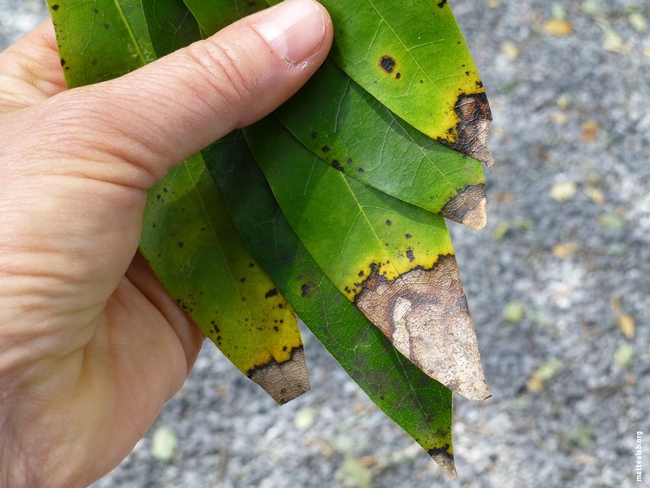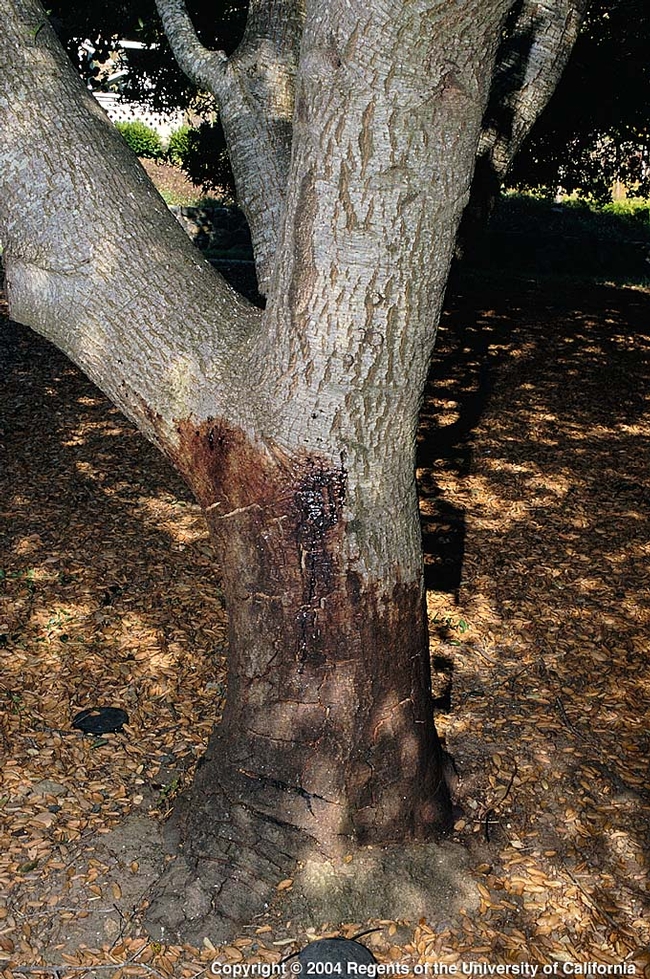Central Coast residents, officials, ranchers and representatives of conservation organizations came out in force to a November UC Cooperative Extension meeting sounding an alarm about the recent detection of Sudden Oak Death (SOD) in San Luis Obispo County trees, reported Kathe Tanner in the San Luis Obispo Tribune.
This was the first such gathering in this county since tests confirmed that the disease made its way south of Monterey County, according to event coordinator Mary Bianchi, director of UC Cooperative Extension in SLO County. But there will be more meetings to come, she said.
Previously confirmed infestations of the disease stayed north of the Monterey County border with San Luis Obispo County. Because SOD spreads by wind and rain, experts believe the prolonged California drought inhibited the spread further south. However, recent tests confirmed the SOD pathogen, phytophthora ramorum, on oaks along the parking lot at Salmon Creek, and in bay laurel trees along Santa Rosa Creek Road, west of Atascadero near Highway 41 and along Stenner Creek and Prefumo Canyon in San Luis Obispo.
Another intensive survey to be conducted by foresters and volunteer citizen scientists in the spring will include Cambria neighborhoods, ranches and other areas. In the meantime, residents were asked to keep an eye out for SOD symptoms in local bay laurel and oak trees. SOD lesions show up as pixilated brown, black or gray areas on leaf tips. Oozing cankers on an oak tree, with sap coming out of the trunk but with no wound evident on the bark, is another sign that the trees could be infected with the pathogen that causes SOD.

